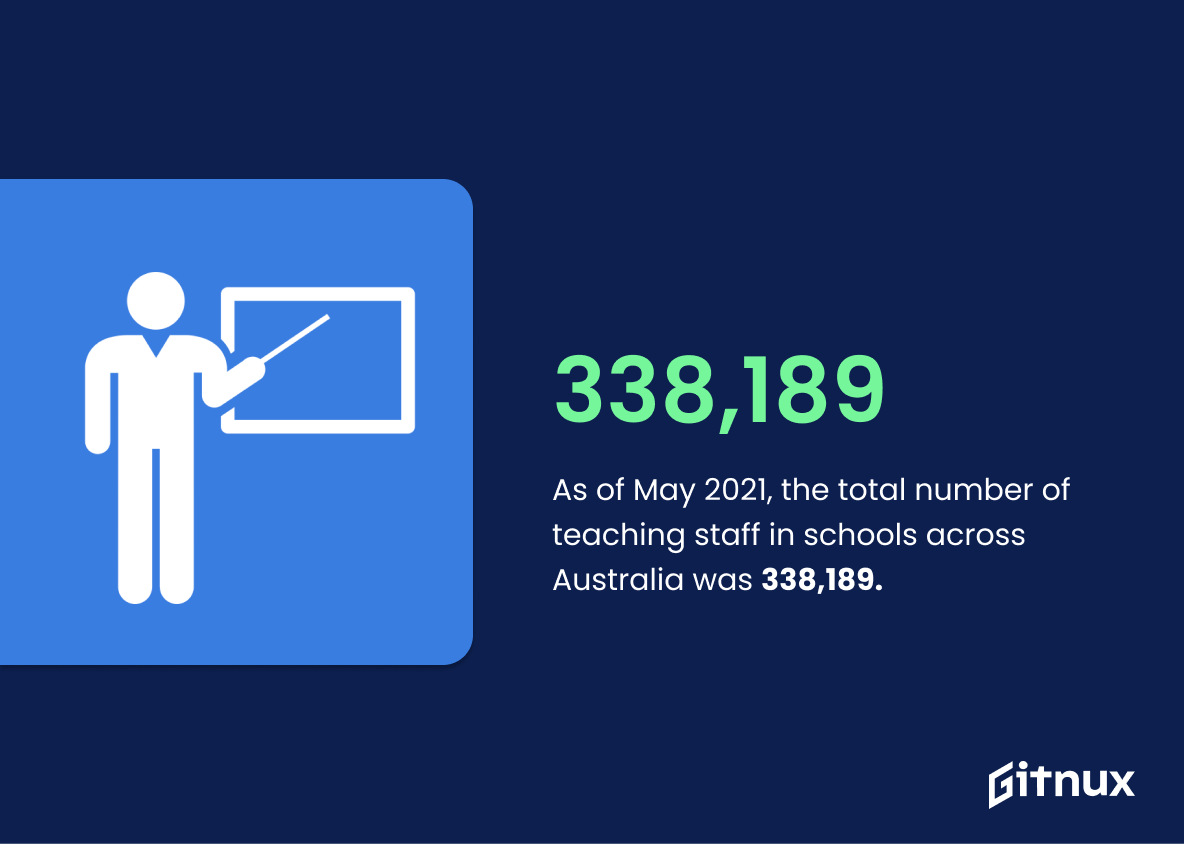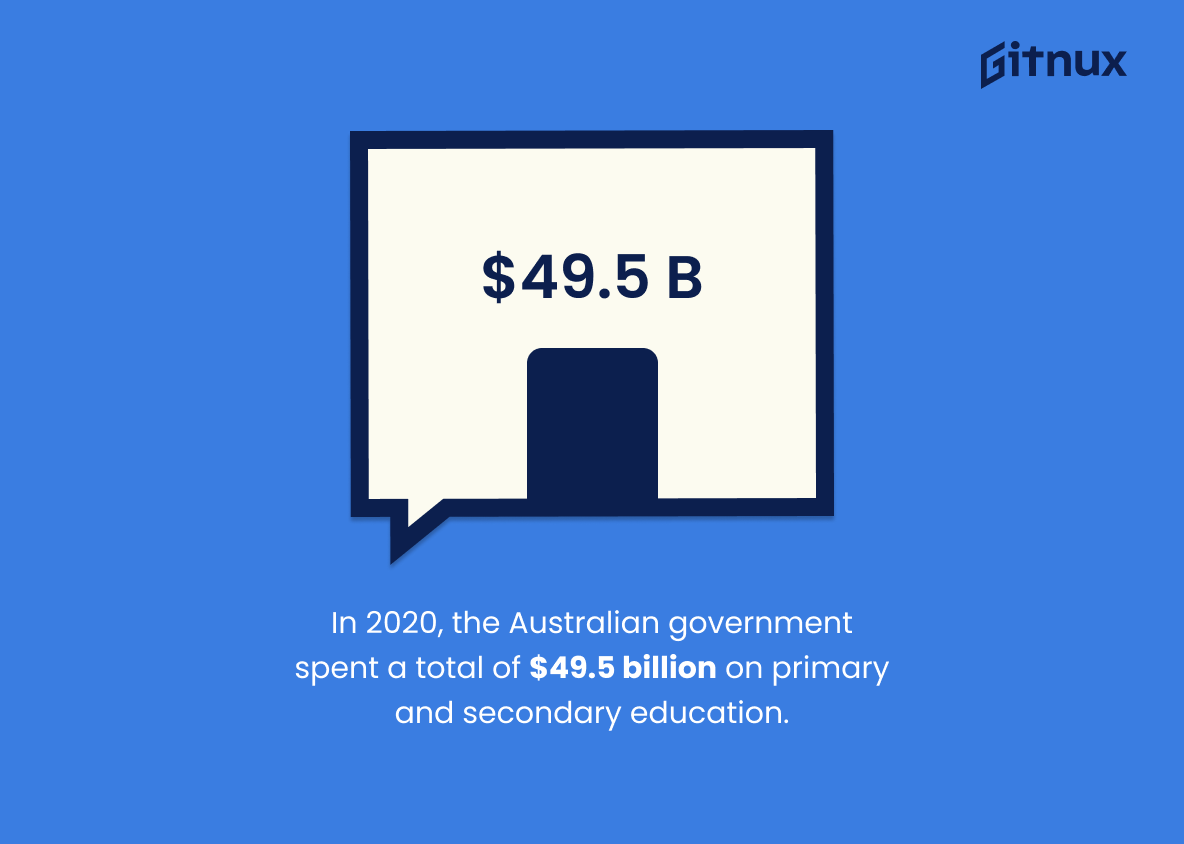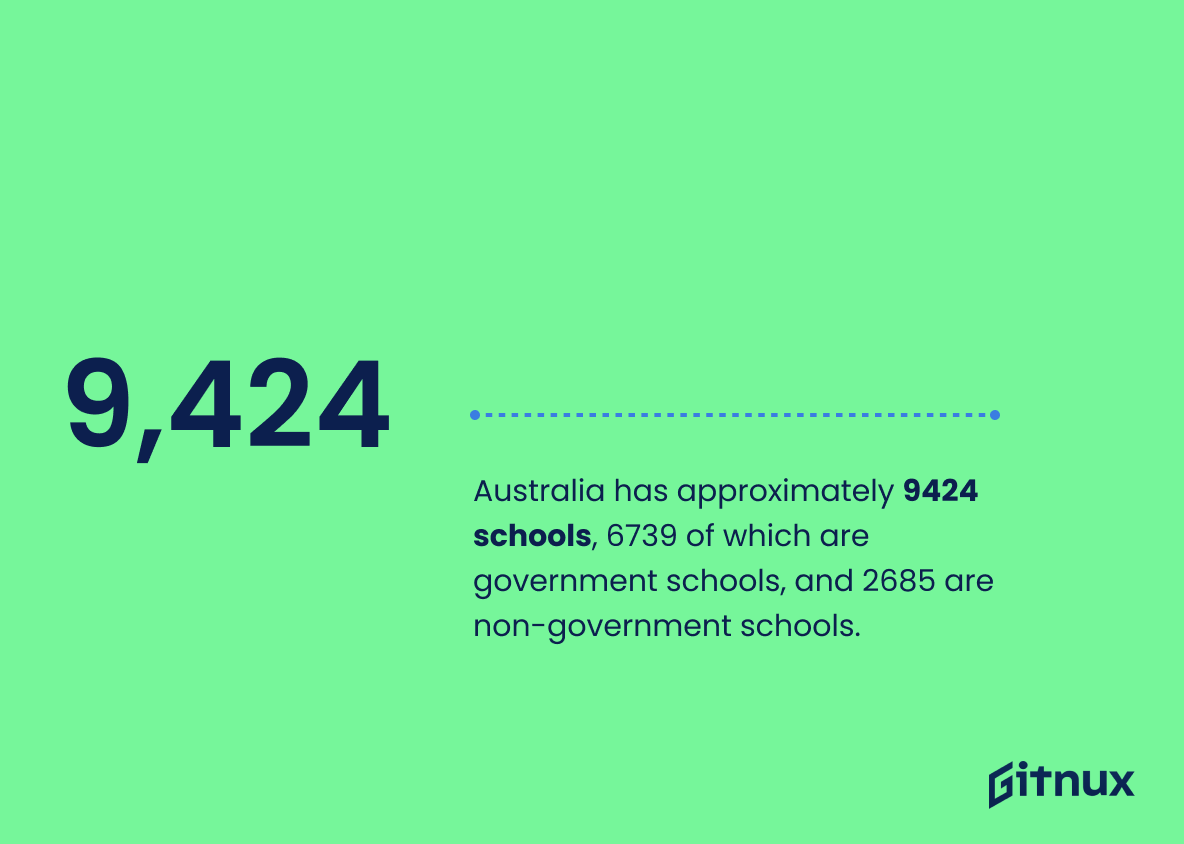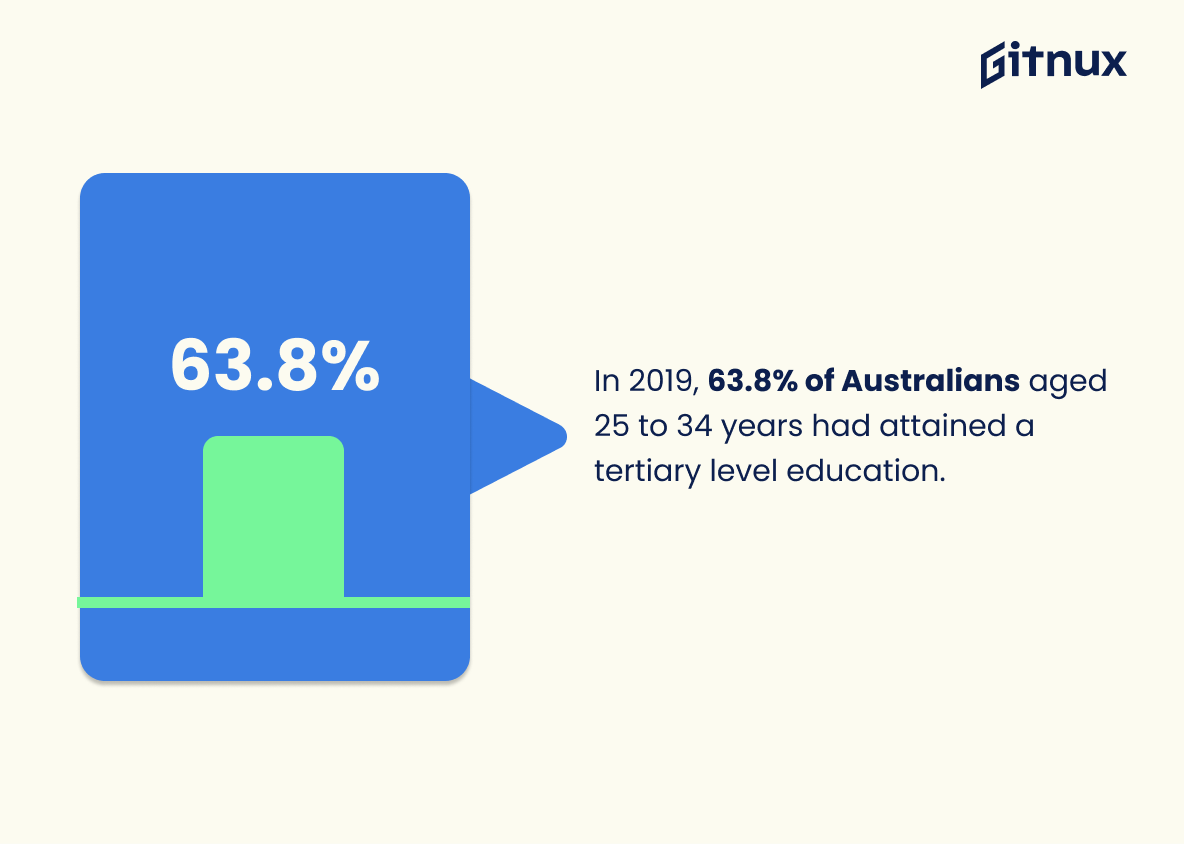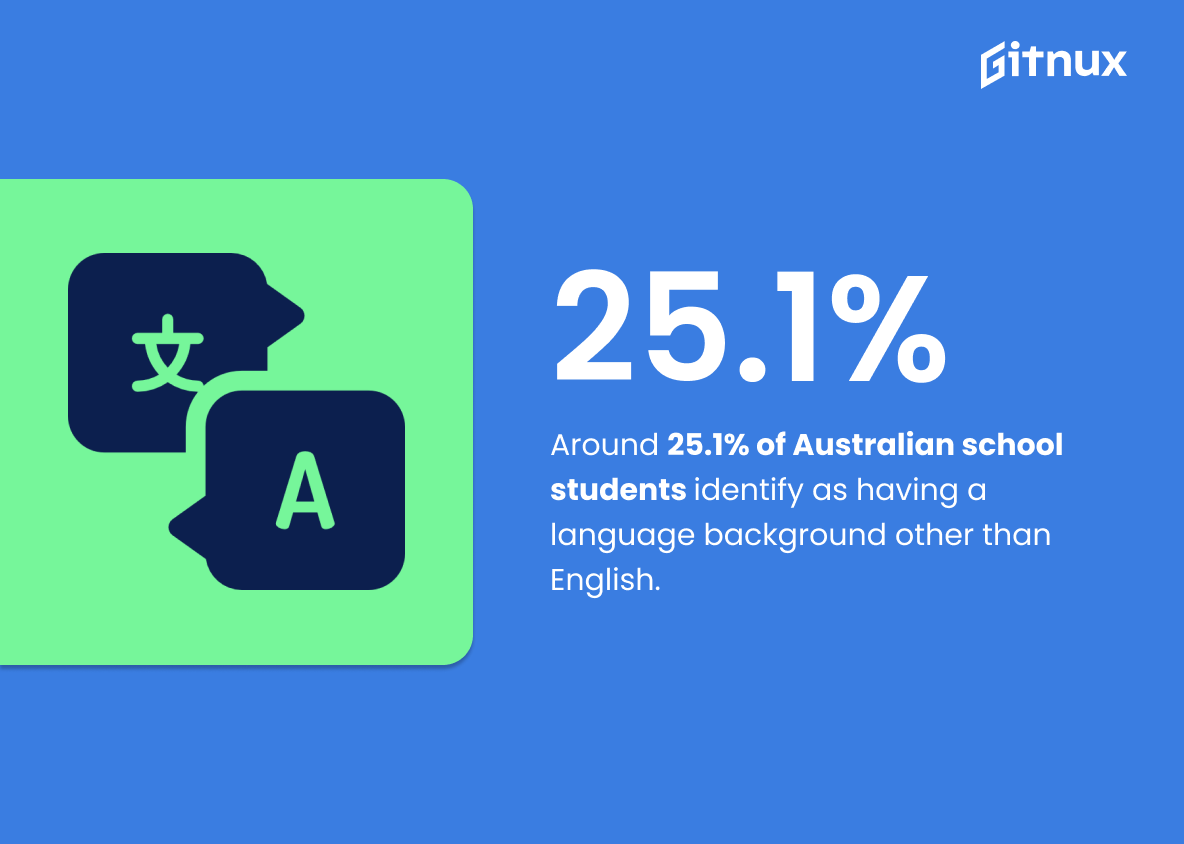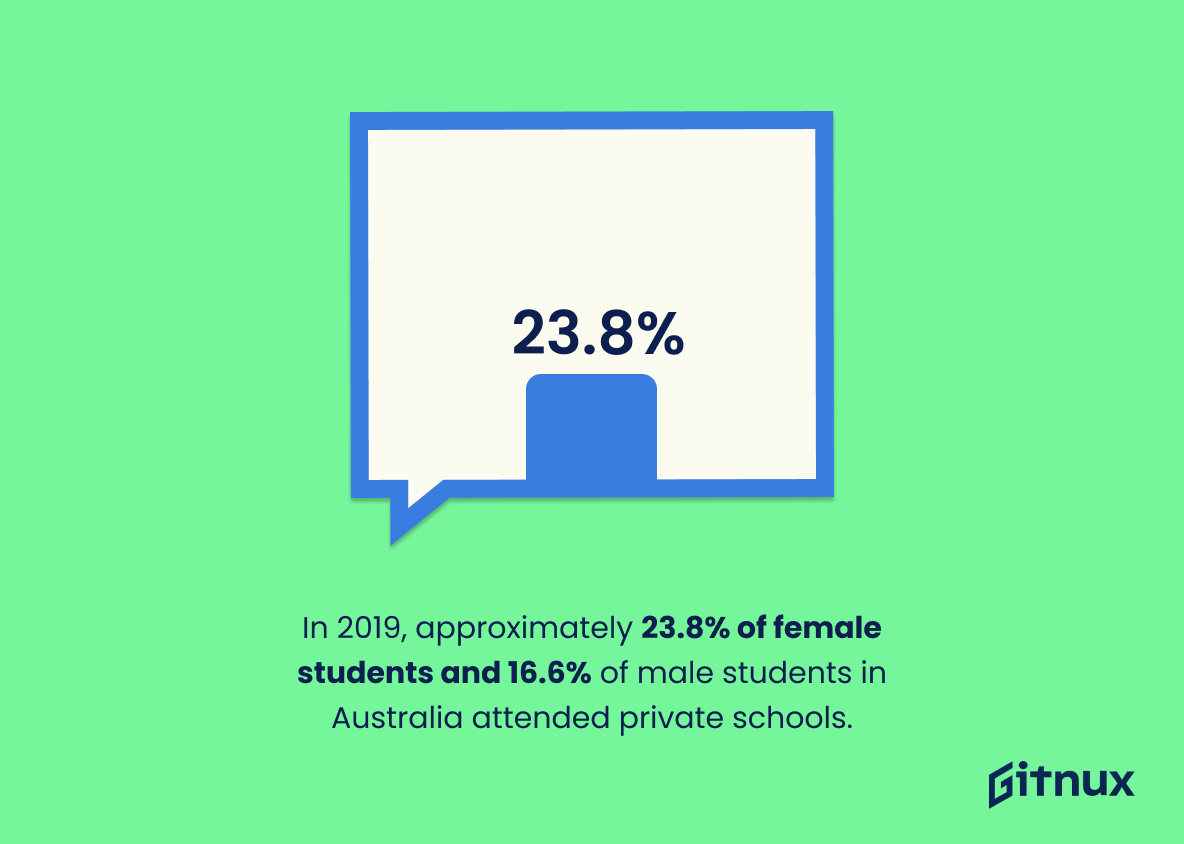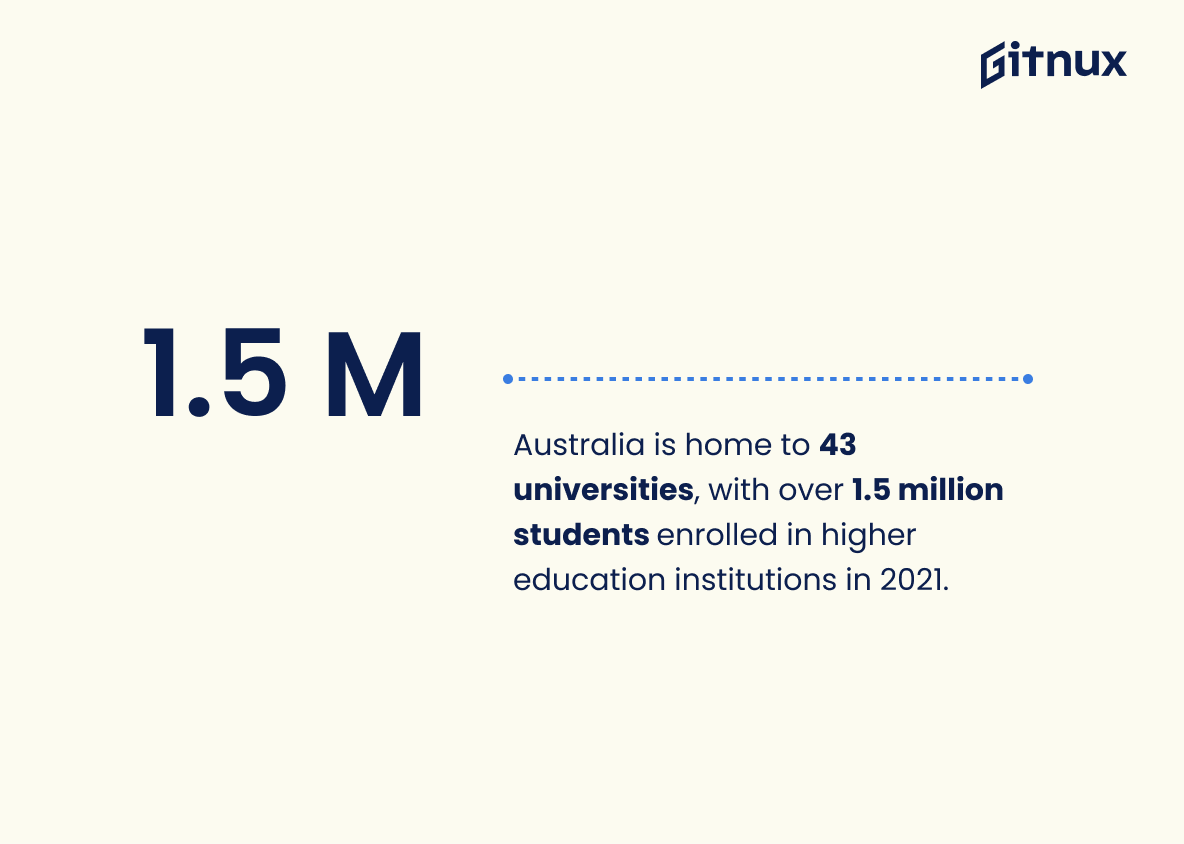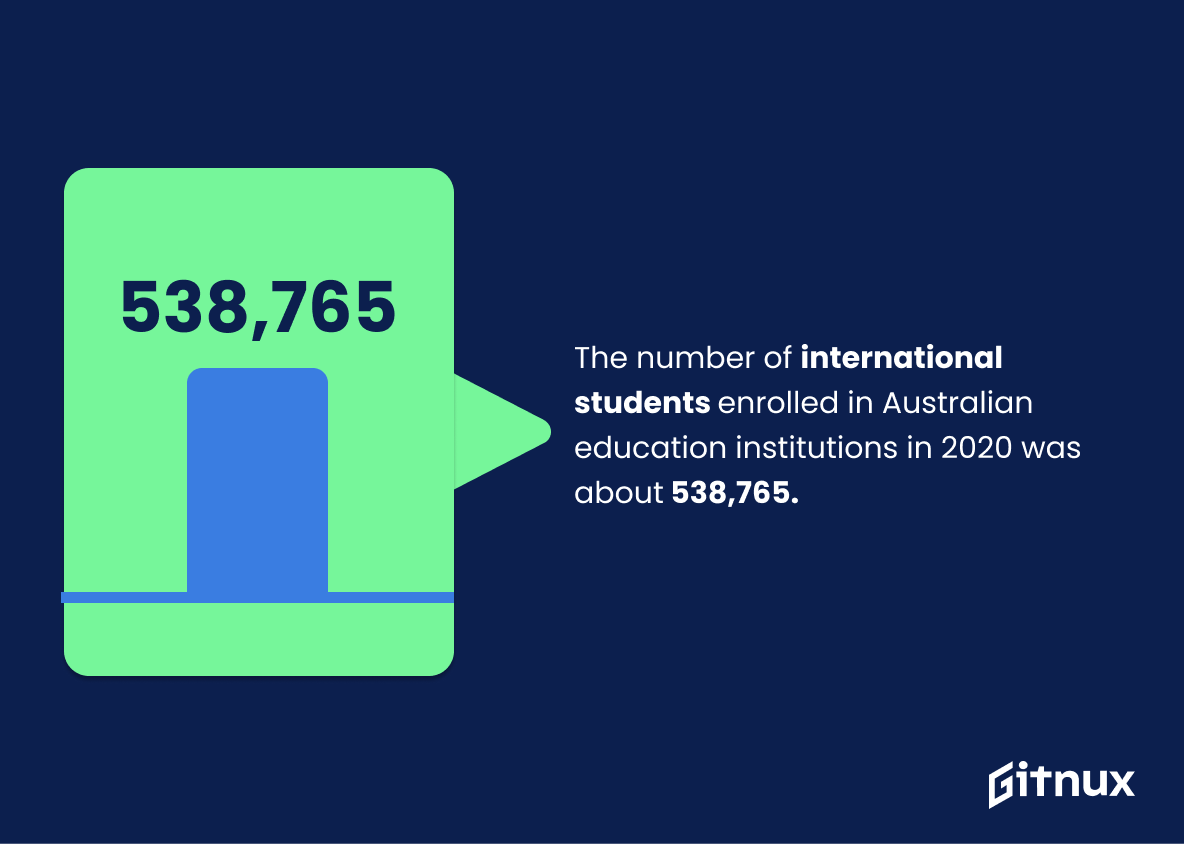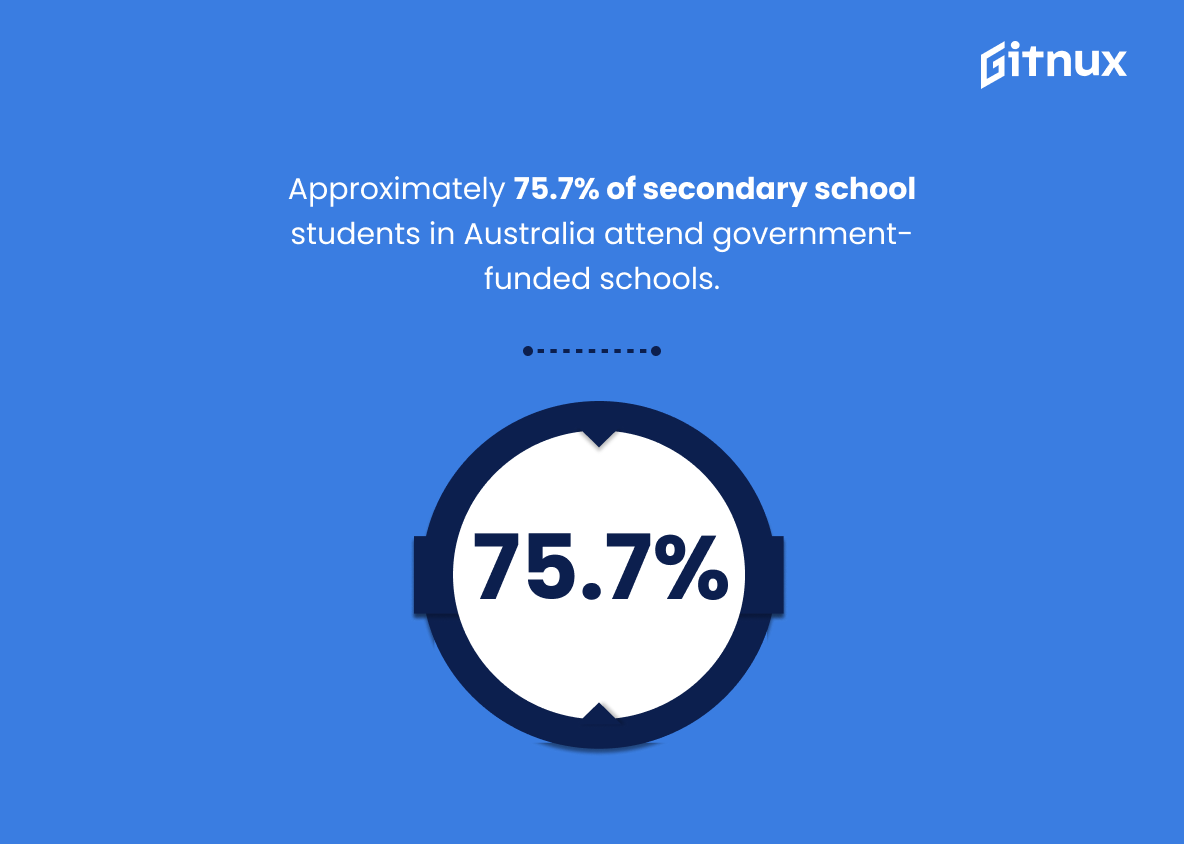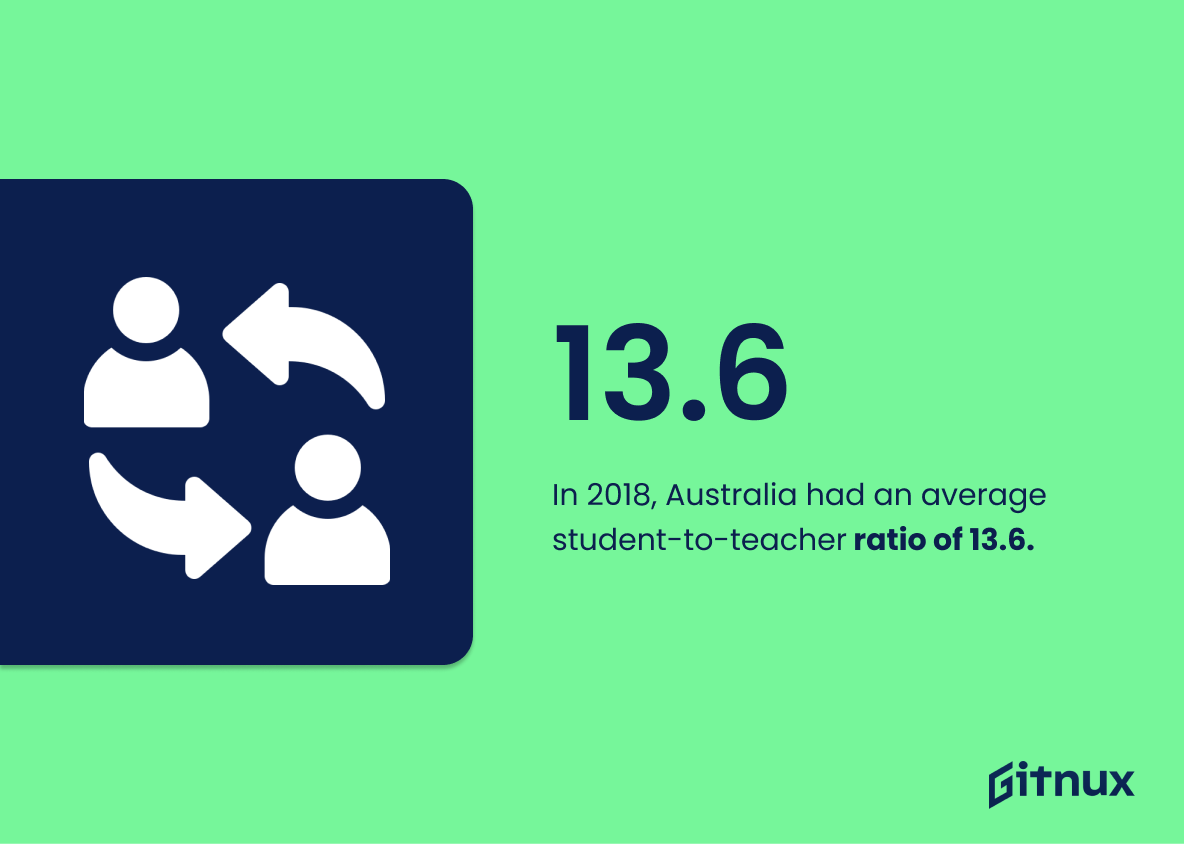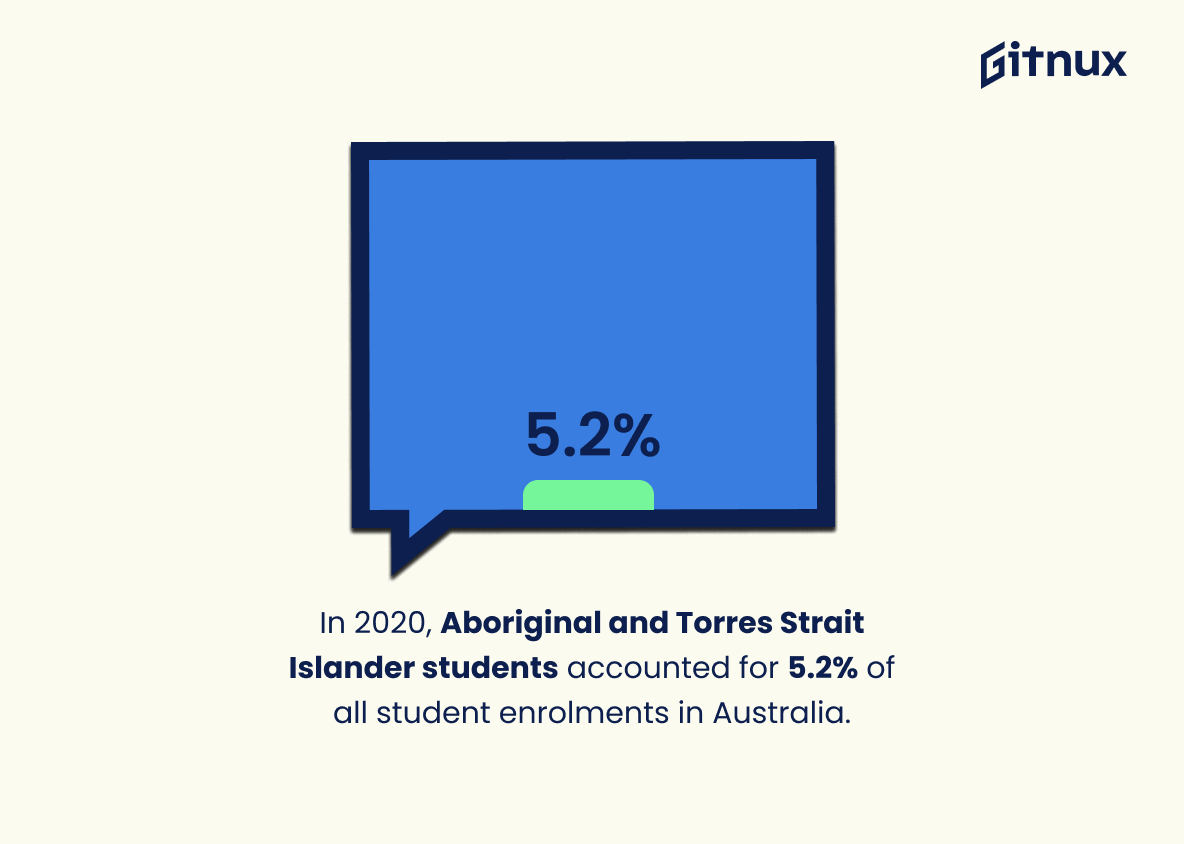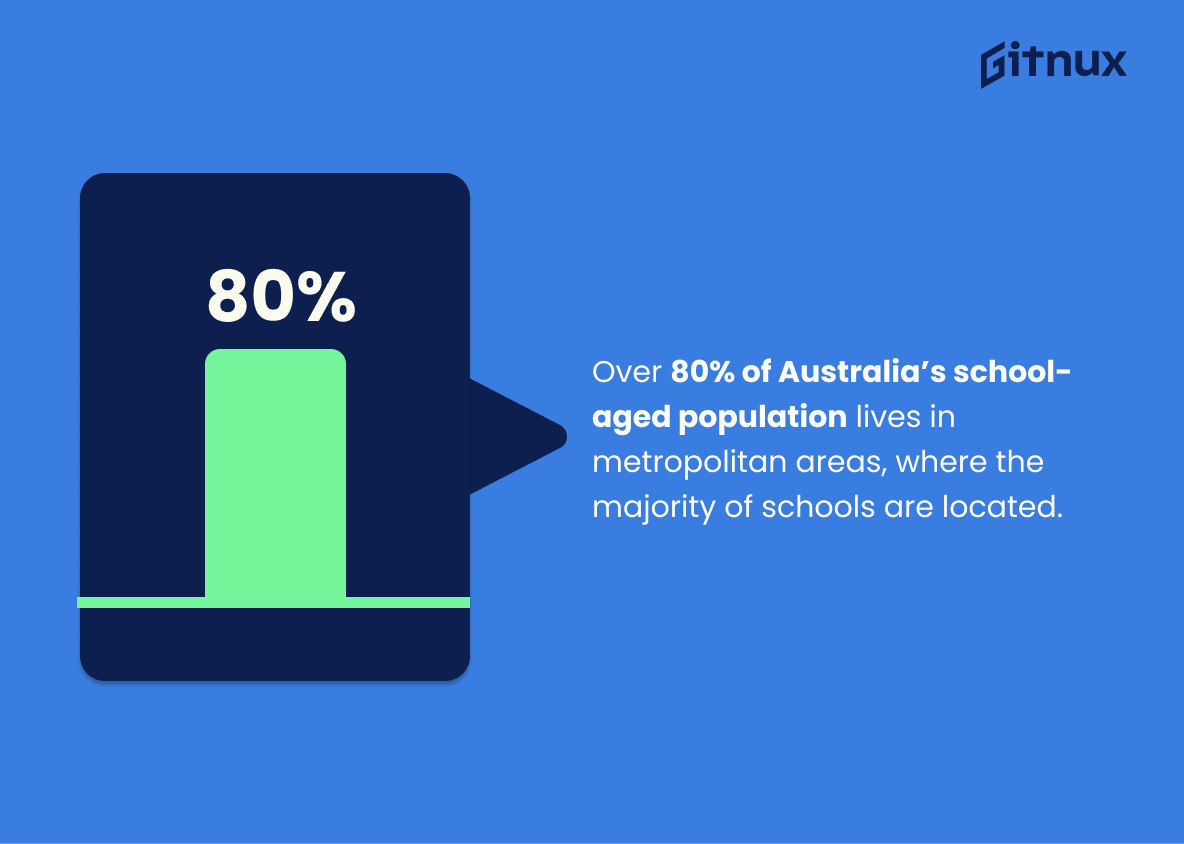Australia is a nation with an impressive education system, and the statistics show just how far it has come. From primary to tertiary level, there are 3.95 million students enrolled in public and private schools across Australia as of 2021. In 2018, Australian students scored an average of 503 in reading, 494 in math and 502 in science according to PISA rankings – placing them among some of the highest performing countries worldwide. As of May 2021, there were 338 189 teaching staff employed at schools throughout Australia; this number continues to grow each year alongside government spending on primary and secondary education which reached $49.5 billion dollars last year alone.
In total there are 9424 schools operating within Australia’s borders: 6739 being government-funded institutions while 2685 are non-government funded establishments catering for different needs or beliefs systems such as religious affiliations or alternative learning styles like Montessori methods etc.. Of those aged 25–34 years old 63% have attained a tertiary level qualification whilst 90% completed Year 12 studies – up from 88%.2 %in 2019 . Furthermore 41% teachers hired by governments had more than 20 years experience under their belt whereas 25 %of school children identified having language backgrounds other than English (LOTE). Private schooling was also popular amongst female students who accounted for 23%, compared to 16% male counterparts attending these types of educational facilities during 2019 period .
At university level 43 universities exist nationwide with over 1 5 million student enrolments recorded during 2020 academic calendar , including internationals whose numbers amounted 538 765 that same year . Education exports generated 37$billion AUD income stream back into economy making it one most profitable industries around world today . 75 percent all secondary schoolers attend state run institutes where teacher/student ratio stands 13 6 :1 respectively ; preschool attendance rate meanwhile hit 94 4 per cent mark last year too . Aboriginal Torres Strait Islander population made up 5 2 per cent overall student body figures whilst functional literacy rates 81 9 adults between ages 16 65 yrs old .. Finally median salary experienced educators after five years service amounts 74 000AUD annually . Over 80 percent Australians live metropolitan areas where majority educational centres located so access quality instruction not problem either ..
This statistic is a powerful indicator of the importance of education in Australia. It shows that despite the challenges of the pandemic, there is still a strong commitment to education in the country. It also highlights the need for continued investment in education to ensure that all students have access to quality education. This statistic is a reminder of the importance of education in Australia and the need to ensure that all students have the opportunity to reach their full potential.
Australian students scored an average of 503 in reading, 494 in math, and 502 in science in the 2018 PISA rankings.
The 2018 PISA rankings demonstrate that Australian students are performing at a moderate level in reading, math, and science. With an average score of 503 in reading, 494 in math, and 502 in science, it is clear that there is room for improvement in the Australian education system. This data serves as a reminder that Australian students need to be provided with the resources and support necessary to reach their full potential.
Australian Education Statistics Overview
As of May 2021, the total number of teaching staff in schools across Australia was 338,189.
This statistic is a powerful indicator of the importance of education in Australia. It shows that the nation is investing heavily in its educational system, with a large number of teaching staff employed to ensure that students receive the best possible education. This statistic is also a testament to the dedication of the teaching staff, who are working hard to ensure that students have the best possible learning experience.
In 2020, the Australian government spent a total of $49.5 billion on primary and secondary education.
This statistic is a powerful indicator of the Australian government’s commitment to primary and secondary education. It demonstrates the government’s willingness to invest in the future of the nation’s youth, and highlights the importance of education in the country. It also serves as a reminder of the need for continued investment in education, as well as the need for reform and improvement in the sector.
Australia has approximately 9424 schools, 6739 of which are government schools, and 2685 are non-government schools.
This statistic is a telling indication of the state of education in Australia. It reveals that the majority of schools in the country are government-run, suggesting that the government is heavily invested in providing quality education to its citizens. Furthermore, the fact that there are still a significant number of non-government schools indicates that there is a thriving private education sector in the country.
In 2019, 63.8% of Australians aged 25 to 34 years had attained a tertiary level education.
This statistic is a telling indication of the success of Australia’s education system, as it shows that a majority of the population aged 25 to 34 have achieved a tertiary level education. This is a positive sign for the future of the country, as it suggests that the younger generations are well-equipped to take on the challenges of the modern world. It also highlights the importance of investing in education, as it is clear that the investment is paying off.
Approximately 41% of government-hired teachers in Australia have more than 20 years of experience.
This statistic is indicative of the wealth of experience that Australian teachers have in the classroom. With over 40% of government-hired teachers having more than two decades of experience, it is clear that the education system in Australia is benefiting from the expertise of veteran teachers. This is especially important in a time when the quality of education is of paramount importance. The knowledge and skills that these teachers have acquired over the years can be invaluable in helping to shape the future of Australian students.
Around 25.1% of Australian school students identify as having a language background other than English.
This statistic is a powerful reminder of the cultural diversity of Australia’s school system. It highlights the importance of providing educational resources and support to students from a variety of language backgrounds, in order to ensure that all students have access to the same quality of education.
In 2019, approximately 23.8% of female students and 16.6% of male students in Australia attended private schools.
This statistic is a telling indication of the gender disparity in Australian education. It suggests that a greater proportion of female students are attending private schools than male students, which could be indicative of a wider gender gap in educational opportunities. This could be due to a variety of factors, such as the availability of scholarships or the prevalence of single-sex schools. This statistic is an important reminder that gender inequality in education is still an issue in Australia, and that more needs to be done to ensure that all students have equal access to educational opportunities.
Australia is home to 43 universities, with over 1.5 million students enrolled in higher education institutions in 2021.
This statistic is a testament to the importance of education in Australia. It highlights the sheer number of universities and students enrolled in higher education institutions, demonstrating the commitment of Australians to learning and knowledge. It also speaks to the quality of education available in the country, as well as the opportunities available to those who pursue higher education. This statistic is a powerful reminder of the value of education in Australia and its importance to the nation’s future.
The number of international students enrolled in Australian education institutions in 2020 was about 538,765.
This statistic is a telling indication of the importance of Australian education institutions in the international arena. It shows that Australian education is highly sought after by students from around the world, and that the country is a leader in providing quality education. This statistic is a testament to the success of the Australian education system and its ability to attract and retain students from all corners of the globe.
Approximately 75.7% of secondary school students in Australia attend government-funded schools.
This statistic is a telling indication of the state of education in Australia. It highlights the fact that the majority of secondary school students in the country are attending government-funded schools, which suggests that the government is investing heavily in the education of its citizens. This is an important factor to consider when discussing the overall quality of education in Australia.
In 2018, Australia had an average student-to-teacher ratio of 13.6.
The student-to-teacher ratio of 13.6 in 2018 is indicative of the quality of education in Australia. It suggests that students are receiving the individual attention they need to succeed, as teachers are able to devote more time to each student. This statistic is an important indicator of the overall quality of education in Australia and should be taken into consideration when discussing Australian education statistics.
In 2020, Aboriginal and Torres Strait Islander students accounted for 5.2% of all student enrolments in Australia.
This statistic is a powerful reminder of the importance of ensuring that Aboriginal and Torres Strait Islander students have access to the same educational opportunities as other students in Australia. It highlights the need for continued efforts to close the gap between Indigenous and non-Indigenous students in terms of educational outcomes. It also serves as a reminder of the importance of providing culturally appropriate support and resources to Indigenous students to ensure they are able to reach their full potential.
In 2021, the median salary of Australian teaching staff with 5 years of experience is around $74,000 AUD.
This statistic is a telling indication of the value placed on teaching staff in Australia. It demonstrates that those with five years of experience are rewarded with a salary that is well above the median income for the country. This speaks to the importance of education in Australia and the recognition of the hard work and dedication of teachers. It also serves as a reminder of the need to continue to invest in the education system and ensure that teachers are adequately compensated for their efforts.
Over 80% of Australia’s school-aged population lives in metropolitan areas, where the majority of schools are located.
This statistic is a telling indication of the educational landscape in Australia, highlighting the fact that the majority of schools are located in metropolitan areas, where the vast majority of school-aged children reside. This means that the majority of students have access to educational institutions, but it also means that those living in rural areas may not have the same access to educational opportunities. This is an important factor to consider when discussing Australian education statistics.
Conclusion
The statistics presented in this blog post demonstrate the current state of education in Australia. With over 3.95 million students enrolled across public and private schools, Australian students have achieved high scores on international tests such as PISA, while government spending on primary and secondary education has reached $49.5 billion annually. There are approximately 9424 schools throughout the country with a student-to-teacher ratio of 13.6, and around 25% of school enrolments come from non-English speaking backgrounds. Additionally, 63% of Australians aged 25 to 34 years had attained tertiary level qualifications by 2019; 90% completed Year 12 in 2020; 43 universities offer higher education opportunities for 1.5 million students; 538 thousand international students were enrolled at educational institutions last year; exports amounted to $37 billion dollars in 2019; 75 percent attend government funded schools and 81 percent have functional literacy rates between 16 – 65 years old respectively . Finally, teaching staff salaries average around $74k per annum with 41 percent having more than 20 years experience whilst Aboriginal & Torres Strait Islander Students account for 5%. It is clear that Australia’s commitment to providing quality educational services continues to be strong despite challenges posed by COVID19 pandemic restrictions during 2020/21 academic year
References
0. – https://www.universitiesaustralia.edu.au
1. – https://www.data.oecd.org
2. – https://www.oecd.org
3. – https://www.acara.edu.au
4. – https://www.apo.org.au
5. – https://www.internationaleducation.gov.au
6. – https://www.data.worldbank.org
7. – https://www.abs.gov.au
